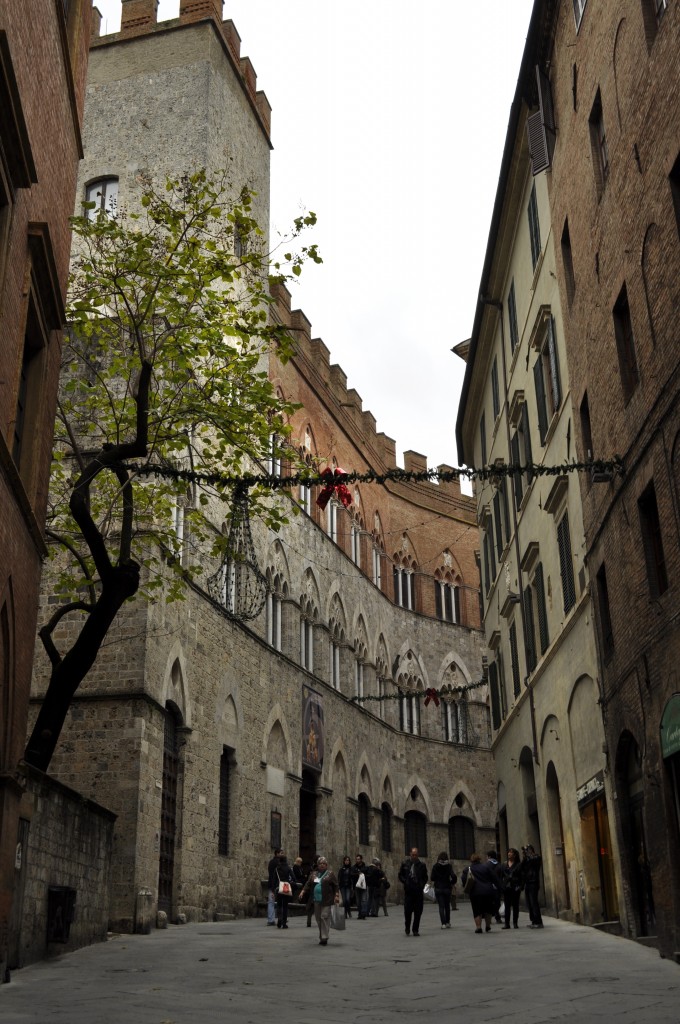Siena is a distinguished by its food, art, medieval landscape, and the natural surroundings. While there were many interesting parts of Siena, the most influential, in my opinion, are the Piazza del Campo and the Cathedral of Siena.
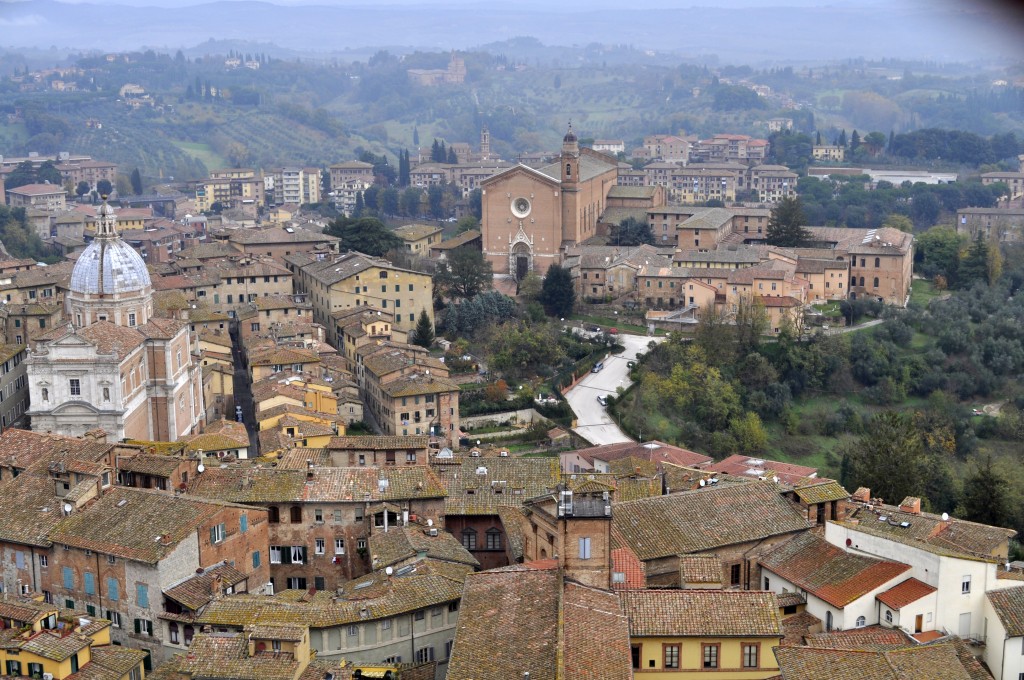
The Piazza del Campo is dissimilar from the normal Italian archetypal piazza in that it is shaped like a seashell and sloped towards the Torre del Mangia, which anchors the piazza. This piazza is most commonly known for the Palio, a horse race with competitors from the different “contrade,” quarters, of Siena. Unfortunately, the Palio happens only twice a year- once on July 2 and once on August 16. However, we were able to experience the year-long culture that surrounds the Palio. While we walked around Sienna for dinner, we were able to see a community dinner for one of the competitors.

The Piazza del Campo is my favorite piazza in that the simple move of sloping the ground plane changes the environment so drastically. The slight slope creates a notion that the ground is something that can be occupied and sat on. In fact, while we were there groups of people sat on the ground of the Piazza- enjoying a lunch, eating gelato, or gathering for a quick chat with friends.
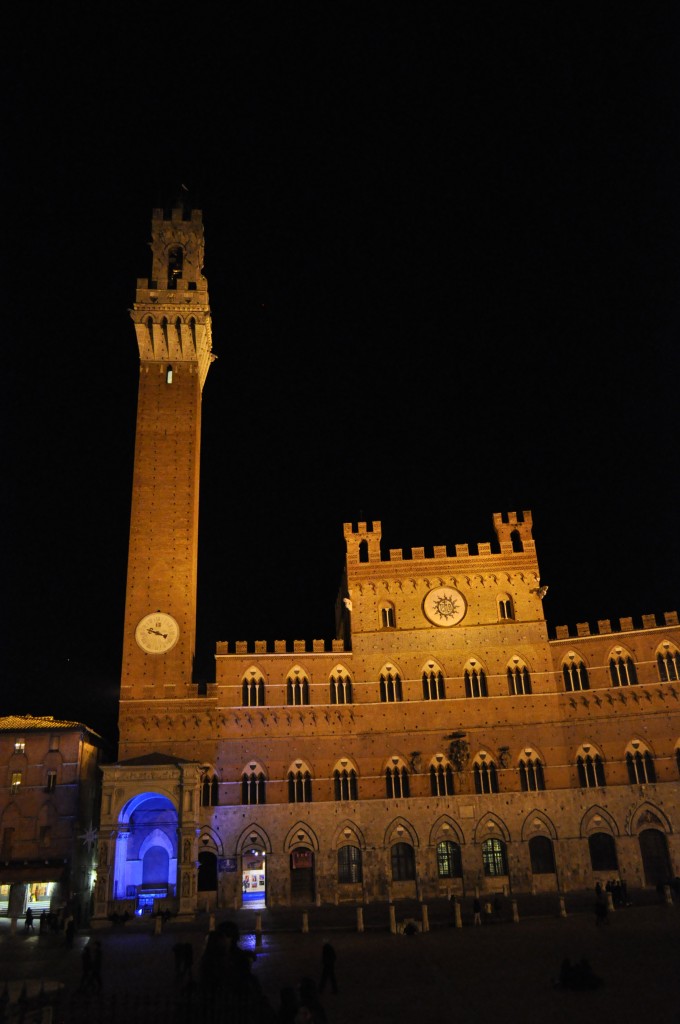
The other main visit in Siena was to the Cathedral of Siena, a Romanesque-Gothic structure that is characterized by its striped façade and interior. Underneath the Cathedral, it is possible to see the baptismal font designed by several 15th century sculptors- among them, Donatello, Ghiberti, and Jacopo della Quercia.
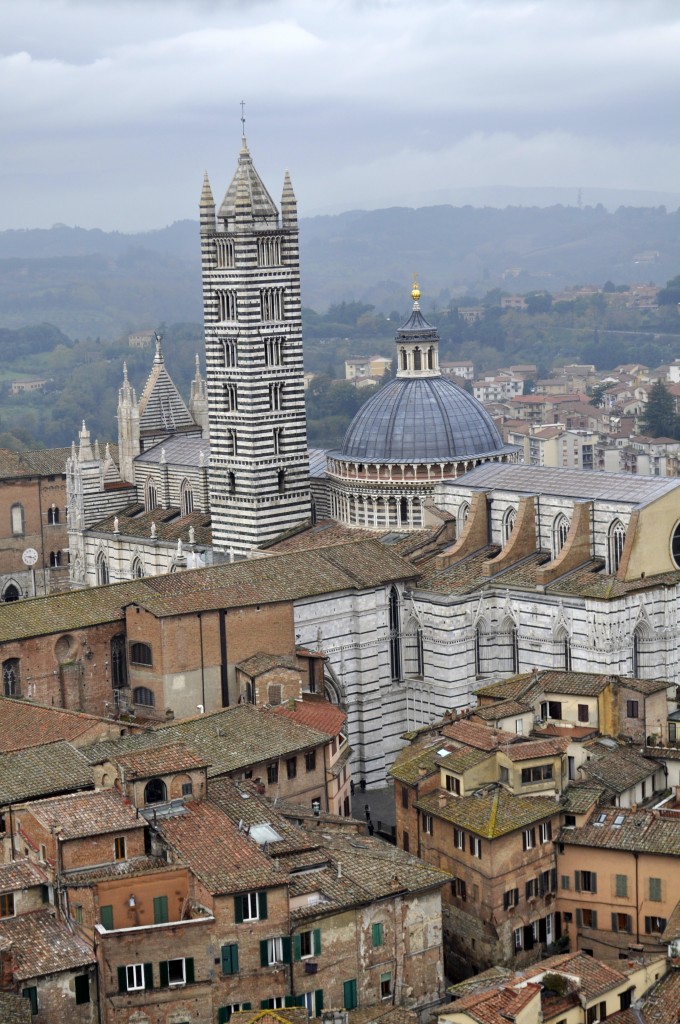
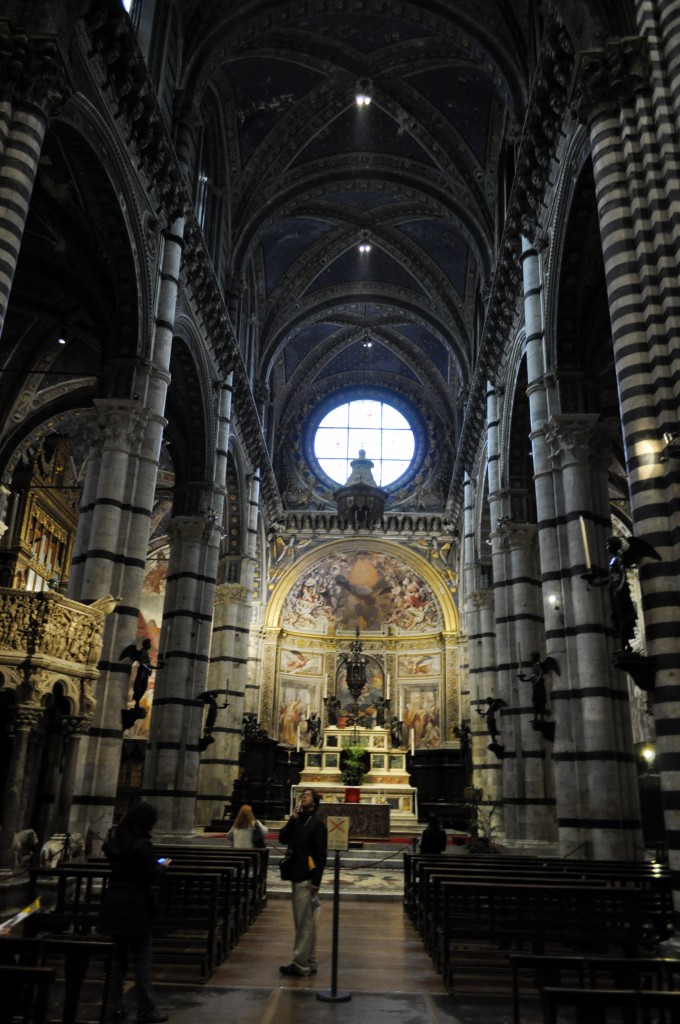
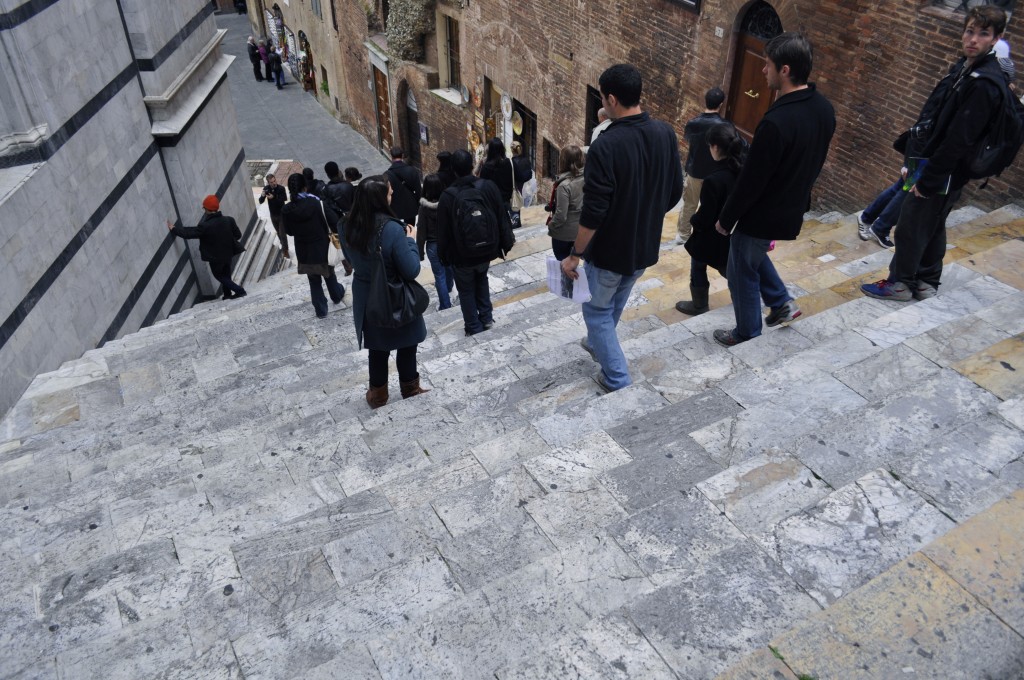
The most famous work of art in Siena is the Maesta by Duccio in the Museo dell’Opera del Duomo. The front altarpiece is composed of a depiction of the Madonna and child surrounded by saints and angels. Supposedly, after the piece was completed, the panels were paraded around the Piazza del Campo and around the city streets.
Even today the cultural, political, and financial importance that Siena held during the height of its importance in the medieval times is still clear. While the town is fairly small, it is punctuated by very monumental works of architecture and civic spaces.
